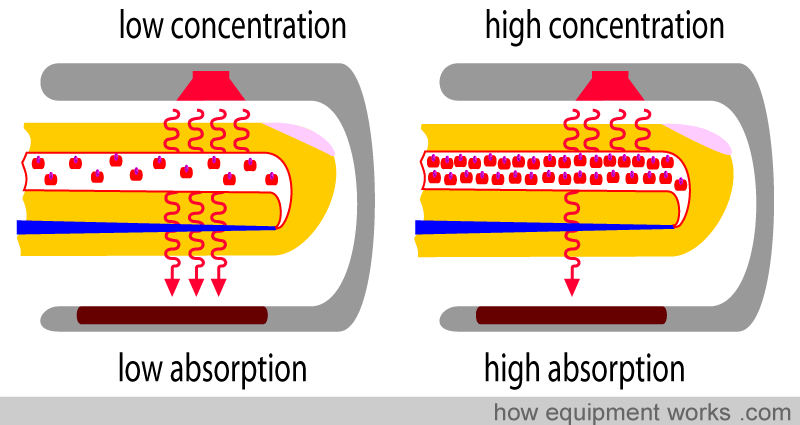Contents
Pulse oximeter: how does it work?
A pulse oximeter is a device that indicates the oxygen saturation in the blood and the pulse. It is used by healthcare professionals but also at home. Discover its different uses.
What is a pulse oximeter?
A pulse oximeter or oximeter is a device that non-invasively measures the oxygen saturation of the blood. and which indicates the pulse. This device is very frequently used in hospitals to monitor patients who have respiratory distress or who are on invasive or non-invasive ventilatory supports (oxygen therapy). It is also useful in the GP’s office and at home to monitor if a person is not in respiratory distress. People with Covid-19 have been fitted with a pulse oximeter to monitor their oxygen saturation.
Composition
A pulse oximeter is made up of a sensor that is usually in the form of a case, a monitor with display, and a cable.
There are other models, reusable or not, of various shapes and consistency:
- rigid plastic finger or nose pliers;
- flexible finger cot;
- self-adhesive strips for the finger or hand (pediatrics), nose or ear.
What is a pulse oximeter used for?
A pulse oximeter or saturometer provides a simple, reliable, non-invasive and continuous measurement of arterial hemoglobin saturation. It transmits a ray of light through tissue, most often a finger or toe in adults, but also the nose or earlobe, or the hand or foot in young children. The value given by the pulse oximeter is called “Pulsed hemoglobin oxygen saturation, or SpO2”, to distinguish it from the measurement of hemoglobin saturation by arterial blood sampling (arterial hemoglobin saturation oxygen (O2), measured by blood gases (SaO2), and also indicates pulse and heart rate.
When is a pulse oximeter used?
A pulse oximeter is a method of screening and monitoring for hypoxemia (decrease in the amount of oxygen carried in the blood).
It is indicated for:
- screening and monitoring for states of respiratory failure and hypoxemia in adults and children;
- evaluation of the favorable response to oxygen therapy and / or prescribed therapies;
- monitoring of a patient intubated or under general anesthesia.
SpO2 measured with a pulse oximeter is one of the vital parameters which is evaluated in consultation with consciousness, heart rate, blood pressure, respiratory rate, temperature. This is one of the criteria of triage at the reception of emergencies.
Public concerned or at risk
A pulse oximeter is indicated for people whose oxygen level needs to be monitored because they have a condition that affects oxygen (asthma, pneumonia, lung cancer, anemia, etc.) or because they have suffered surgery.) and those for which it is necessary to know if the oxygen therapy in place is effective.
Covid-19 and pulse oximeter
Measuring pulsed oxygen saturation (SpO2) on the finger is part of the medical assessment of a person who tests positive for Covid-19.
Enhanced monitoring by a pulse oximeter (or saturometer) is indicated in patients:
- whose age is greater than or equal to 65 years;
- or having other risk factors of severe form of Covid-19;
- or having respiratory signs.
This monitoring is carried out by self-monitoring or by a nurse.
How is a pulse oximeter used?
The stages of operation
The sensor with the shape of a clamp is placed on the fingertips (index, middle or ring finger) most often. It can also be attached to the earlobe, at the end of the nose, on a toe, under the soles of the feet. In newborns, the oximeter is placed in the upper right limb.
The oximeter display then indicates the oxygen saturation in the blood as a percentage SPO2 and the pulse rate in beats per minute.
Normal or abnormal oxygen saturation
Normal oxygen saturation for a healthy person is between 95% and 100% SpO2 (pulse saturation measured with a pulse oximeter).
Below 95% the person is said to have hypoxemia.
Normal arterial oxygen saturation (SaO2) is between 96% and 98% in a young adult and is 95% in a person over 70 years of age.
Between 90 and 93% saturation is said to be mediocre.
When it is less than 90%, the person is said to be in desaturation. It’s hypoxemia. A “normal” SpO2 for a child corresponds to a value greater than 95%. A SpO2 level of less than 94% in a child is a criterion of seriousness and leads to hospitalization.
Precautions to take
Some precautions must be taken to obtain a reliable result:
- the pulse oximeter should be in the correct position and the person should not move;
- it should be used at room temperature as the cold can cause it to malfunction;
- too bright light in the room can also cause the device to malfunction;
- finally, nail polish, false nails and certain chemicals on the hands can skew the results.
How do you choose the right pulse oximeter?
The pulse oximeter technique was invented in 1942 and has been used since the 1980s by American anesthetists in the operating room and recovery room.
What criteria for choosing a pulse oximeter?
If you want to buy a pulse oximeter or oximeter, be sure to choose:
- a product that has a certification (CE for example);
- a small oximeter easy to carry everywhere but with a readable screen;
- an oximeter adapted to the person (adult model or child model).
Prefer models that keep the data in memory and with an alarm system when the pulse or oxygen saturation is beyond the standards.










